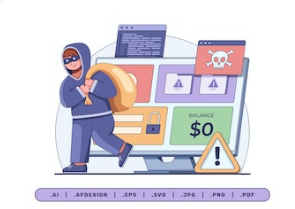To protect yourself from personalized spear-phishing attacks, it’s important to recognize specific red flags that may indicate an attempt to deceive you. Here’s a list of common warning signs to look out for:
1. Suspicious Email Addresses
- The sender’s email address looks unusual or slightly altered (e.g., using a different domain or minor typo).
- The domain name looks similar to a legitimate organization but is not identical.
2. Unusual Requests for Sensitive Information
- The email or message asks for sensitive information such as passwords, Social Security numbers, or bank details, especially if it comes unexpectedly.
3. Urgency or Pressure to Act Quickly
- Messages that create a sense of urgency, implying immediate action is required (e.g., “Your account will be suspended if you don’t respond”).
- Threats of negative consequences if you do not act quickly.
4. Generic Greetings
- The message uses generic greetings (e.g., “Dear Customer” or “Hello User”) instead of addressing you by name, which suggests a mass email rather than a personalized communication.
5. Grammar and Spelling Errors
- Presence of poor grammar, spelling mistakes, or awkward phrasing, which can indicate a lack of professionalism.
6. Unfamiliar Links or Attachments
- The inclusion of unexpected links or attachments, especially if you weren’t anticipating any communication—hover over links to see the actual URL before clicking.
- Links that lead to unfamiliar or suspicious websites.
7. Inconsistent Branding
- Logos, headers, or overall formatting that does not match the legitimate branding of the company or organization purportedly contacting you.
8. Unusual Language or Tone
- The tone of the message seems off, overly casual, or overly aggressive compared to typical communications from the sender.
9. Inconsistent Information
- Information provided in the message does not align with your previous interactions with the company or individual (e.g., changes in account details that you haven’t initiated).
10. Requests for Payments or Transfers
- Sudden requests for payments, especially if they ask for unconventional payment methods (like gift cards or crypto-currencies) that are not typically associated with legitimate businesses.
11. Too Good to Be True Offers
- Promises of unrealistic deals, prizes, or offers that require immediate action to claim.
12. Limited Contact Options
- Lack of any official contact information or unusual contact methods, such as personal email addresses instead of corporate ones.
13. Follow-Up Communication
- Be cautious if you are pressured to confirm sensitive information via follow-up phone calls or messages that seem to come from the company.
By being aware of these red flags, you can better protect yourself from personalized spear-phishing attacks. Always practice cautiousness when handling unexpected communications, and when in doubt, verify any requests directly with the person or organization through known contact methods before taking any action.
